What Is Irish Mythology?
Ireland is steeped in legend — from mist-covered hills that hide ancient secrets to sacred wells whispered about in song and story. These tales belong to a vast and powerful tradition known as Irish mythology, one of the oldest mythological traditions in Europe. Passed down through generations of storytellers, or filí (pronounced fil-ee), these myths preserve the memory of Ireland’s gods, heroes, and supernatural beings who once shaped the world.
At its heart, Irish mythology tells the story of how the island was formed, the divine races who ruled it, and the mortal heroes who carried their legacy forward. It speaks of the Tuatha Dé Danann, the mighty people of the goddess Danu, who wielded great magic and brought art, wisdom, and skill to Ireland. It recalls warriors like Cú Chulainn and Fionn mac Cumhaill, whose courage and destiny became the stuff of legend.
These myths are not just ancient stories — they are windows into Ireland’s soul. They reveal how early Irish people understood life, death, nature, and the unseen world known as the Otherworld. Even today, echoes of these beliefs live on in Ireland’s folklore, festivals, and place-names.
In this complete guide, we’ll explore the origins of Irish mythology, its divine pantheon, heroic tales, and timeless themes. Whether you’re discovering these stories for the first time or revisiting them with fresh eyes, you’ll uncover how Ireland’s ancient gods and legends continue to shape its identity — and why they still matter today.
The Origins of Irish Mythology

The roots of Irish mythology reach deep into Ireland’s prehistoric past, long before the arrival of Christianity. For centuries, these stories were preserved through oral tradition — passed from druid to bard, from seanchaí (storyteller, pronounced shan-a-kee) to eager listener by the firelight. These tales were more than entertainment; they were the living memory of Ireland’s people, carrying their history, beliefs, and connection to the land.
When Christianity spread across Ireland around the 5th century, monks began recording these ancient stories in writing. Remarkably, rather than erasing the old traditions, many scribes sought to preserve them. Their work gave us priceless manuscripts such as the Book of Invasions (Lebor Gabála Érenn), the Book of Leinster, and the Book of Ballymote, which remain our primary sources for Irish mythology today.
These writings tell of a world shaped by divine races, heroic deeds, and supernatural events. They speak of the Tuatha Dé Danann, who arrived in a mist to claim Ireland as their home; the Fomorians, shadowy beings of chaos and sea; and later, the Milesians, ancestors of the Gaels who became the mortal rulers of Ireland.
Irish mythology’s origins are unique because they bridge two worlds — the ancient pagan beliefs of Ireland’s earliest peoples and the Christian worldview of the monks who recorded them. This blend of faith and folklore created a mythology rich in symbolism, magic, and meaning — one that continues to inspire stories, art, and imagination to this day.
Here’s the next section of your blog post — designed to keep readers engaged while naturally reinforcing the keyword Irish mythology for SEO.
The Mythological Cycles of Ireland
Irish mythology is vast, but it is beautifully organised into what scholars call the Four Cycles of Irish Mythology. These groupings help us understand the stories, gods, and heroes that shaped Ireland’s ancient world. Each cycle reflects a different age — from the time of the gods to the age of mortal kings and warriors — revealing how Ireland’s people saw their place in the cosmos.
1. The Mythological Cycle
The Mythological Cycle is the oldest of the four and tells of Ireland’s divine races and their battles for the island. Central to this cycle are the Tuatha Dé Danann, the people of the goddess Danu, who brought great wisdom, skill, and magical treasures from distant lands. They fought the monstrous Fomorians, beings of chaos and darkness, in legendary battles such as the First and Second Battles of Mag Tuireadh.
This cycle also introduces deities such as The Dagda, Brigid, Lugh, and The Morrígan, whose powers shape the natural and spiritual worlds. These stories form the foundation of Ireland’s mythological heritage.
2. The Ulster Cycle
Set in the heroic age of ancient Ulster, this cycle centres around the Red Branch Knights and their greatest champion, Cú Chulainn. The Ulster Cycle’s most famous tale, The Cattle Raid of Cooley (Táin Bó Cúailnge), tells of Cú Chulainn’s defence of Ulster against Queen Medb of Connacht.
Here, the themes shift from divine power to human heroism — exploring courage, honour, and the tragic cost of glory.
3. The Fenian Cycle
The Fenian Cycle (or Ossianic Cycle) celebrates Ireland’s legendary warrior band, the Fianna, led by the hero Fionn mac Cumhaill. These tales blend adventure, wisdom, and poetry, showing the Fianna as protectors of Ireland and seekers of knowledge.
Famous stories like The Salmon of Knowledge and Tír na nÓg capture the mystical connection between the human world and the Otherworld, where time and mortality hold no sway.
4. The Historical Cycle
Also known as the Cycle of Kings, this collection of stories bridges myth and recorded history. It recounts the deeds of Ireland’s legendary High Kings — rulers like Conn of the Hundred Battles, Cormac mac Airt, and Niall of the Nine Hostages.
These tales intertwine myth with history, presenting Ireland as a land guided by destiny, justice, and divine right.
Together, these four cycles form the backbone of Irish mythology, weaving a tapestry that connects gods, mortals, and the unseen world. Each story is a reflection of Ireland’s spirit — bold, mysterious, and eternal.
The Gods and Goddesses of Irish Mythology
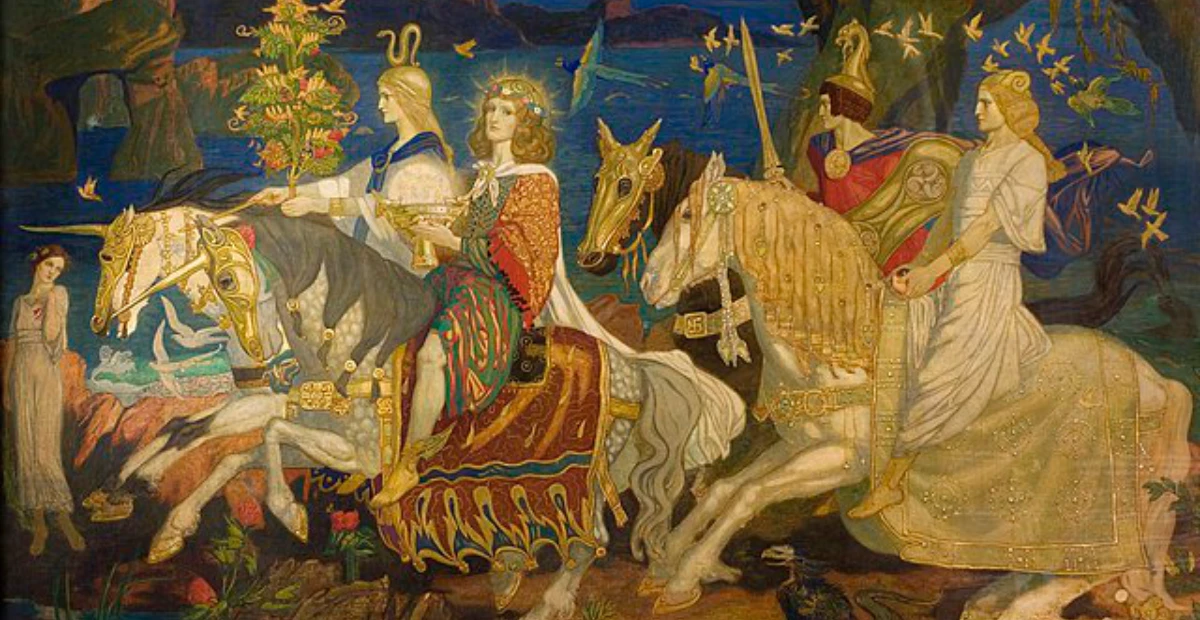
At the heart of Irish mythology stands a pantheon of powerful gods and goddesses who shaped the land, sea, and skies of ancient Ireland. They are the Tuatha Dé Danann — the People of the Goddess Danu — a divine race said to have descended from the heavens or emerged from mist-shrouded islands to claim Ireland as their home. Gifted in art, magic, and warfare, they became the guardians of knowledge, nature, and destiny itself.
The Dagda – The Good God
Known as An Dagda Mór, “the Great Good God,” the Dagda was the father figure of the Tuatha Dé Danann. A god of abundance, wisdom, and strength, he wielded a massive club that could both take life and restore it. His cauldron, the Coire Anseasc, was said to leave no one unsatisfied, symbolising his power over life and nourishment.
Brigid – The Goddess of Fire and Inspiration
Brigid (pronounced Breed) is one of the most beloved figures in Irish mythology. She was the goddess of poetry, healing, and smithcraft — a symbol of creativity and renewal. Her flame burned eternally at Kildare, tended by priestesses even into Christian times, when she became Saint Brigid, blending myth and faith into one enduring figure.
The Morrígan – The Phantom Queen
The Morrígan (pronounced Mor-ree-gun) is the goddess of war, fate, and prophecy. She appears as a crow or raven over battlefields, foretelling death or victory. Mysterious and powerful, she embodies both destruction and renewal, representing the inescapable cycles of life and death that define Irish mythology.
Lugh – The Shining One
Lugh (pronounced Loo) was the god of skill, light, and victory. Known as Lugh Lámhfhada (“Lugh of the Long Arm”), he excelled in every art and craft. His festival, Lughnasadh, celebrated in early August, marked the beginning of the harvest and honoured his foster-mother, Tailtiu. Lugh’s brilliance and mastery made him one of Ireland’s greatest divine heroes.
Manannán mac Lir – Lord of the Sea
Manannán mac Lir, son of the sea god Lir, ruled the waves and the mists between worlds. As a guardian of the Otherworld, he ferried souls to paradise and offered protection to travellers. His magical cloak of invisibility and self-sailing boat made him a symbol of mystery and transition — between life and death, and between this world and the next.
These deities of Irish mythology were not distant gods but living forces within nature — in rivers, storms, harvests, and the turning of the seasons. Their stories remind us that, in Ireland’s ancient world, the divine was never far from human life.
Legendary Heroes and Warriors of Irish Mythology
While the gods shaped the world, it was Ireland’s heroes and warriors who filled it with passion, courage, and tragedy. Their stories capture the heart of Irish mythology, showing mortals who rose to greatness through strength, loyalty, and fate. Many of these heroes were said to descend from the Tuatha Dé Danann, carrying divine blood that set them apart from ordinary men.
Cú Chulainn – The Hound of Ulster
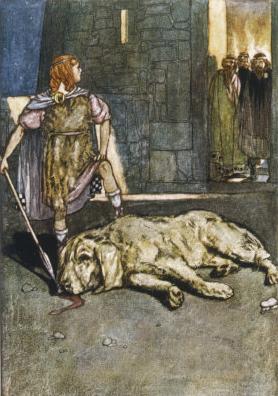
Cú Chulainn (pronounced Coo Kull-in) is perhaps the greatest hero in all of Irish mythology. Born as Sétanta, he earned his famous name after slaying the guard dog of the smith Culann and offering to take its place. A warrior of unmatched skill and ferocity, his story is told in The Cattle Raid of Cooley (Táin Bó Cúailnge), where he single-handedly defends Ulster against Queen Medb’s army. Tragic and noble, Cú Chulainn represents Ireland’s ideal of the heroic spirit — loyal unto death.
Fionn mac Cumhaill – Leader of the Fianna
Fionn mac Cumhaill (pronounced Finn Mac Cool) is the wise and mighty leader of the Fianna, Ireland’s legendary band of warriors. Known for his courage, intelligence, and compassion, Fionn gained his wisdom by tasting the Salmon of Knowledge, which granted him all the world’s understanding. Tales of Fionn and his warriors — especially The Pursuit of Diarmuid and Gráinne and The Voyage of Oisín to Tír na nÓg — fill the Fenian Cycle of Irish mythology with adventure and longing.
Diarmuid Ua Duibhne – The Cursed Lover
A member of Fionn’s Fianna, Diarmuid Ua Duibhne (pronounced Dear-mid O’Div-na) is the hero of one of Ireland’s most romantic and tragic tales. Gifted with a magical love spot on his forehead that made him irresistible, he eloped with Gráinne, the fiancée of his leader, Fionn. Their pursuit across Ireland is one of the most enduring love stories in Irish legend, blending passion, loyalty, and betrayal.
Oisín – The Poet of the Fianna
Oisín (pronounced Uh-sheen), son of Fionn mac Cumhaill, was both warrior and poet — a bridge between the mortal world and the mystical. His most famous tale tells of his journey to Tír na nÓg, the Land of Eternal Youth, with the fairy woman Niamh. After what seemed like only a few years, he returned to find centuries had passed, symbolising the fleeting nature of time and beauty in Irish mythology.
Queen Medb – The Warrior Queen of Connacht
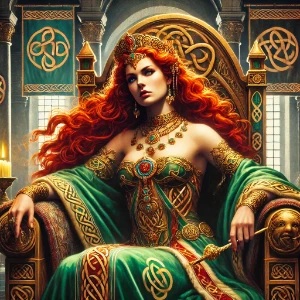
Queen Medb (pronounced Maeve) stands as one of Ireland’s most formidable figures — strong-willed, ambitious, and fearless. She ruled Connacht with authority and led armies into battle, defying the expectations of her age. In The Táin Bó Cúailnge, her desire to equal her husband’s wealth sparks a war that defines the Ulster Cycle. Medb embodies power, independence, and the complexity of leadership.
These heroes and heroines embody the values of ancient Ireland — bravery, loyalty, and the acceptance of destiny. Through their triumphs and tragedies, they remind us that Irish mythology is not only about gods and magic, but about the very human struggles that make legends endure.
Brilliant — here’s the next section, continuing your blog’s flow while keeping strong SEO for Irish mythology and related keywords like Irish myths and legends and Celtic stories.
Famous Myths and Stories of Irish Mythology
The magic of Irish mythology truly comes alive through its stories — tales of gods, heroes, and mystical places that shaped Ireland’s identity. These ancient myths have been passed down for centuries, offering insight into how early Irish people understood courage, fate, and the balance between worlds. Here are some of the most famous legends that continue to capture hearts today.
The First Battle of Mag Tuireadh
This epic battle tells of the arrival of the Tuatha Dé Danann in Ireland and their clash with the Fir Bolg, the island’s earlier inhabitants. The Tuatha’s victory established their divine rule, marking the beginning of Ireland’s mythological age. This story symbolises the triumph of knowledge and skill over brute strength — a theme found throughout Irish mythology.
The Second Battle of Mag Tuireadh
The Tuatha Dé Danann would face another great conflict — this time against the dark and chaotic Fomorians led by Balor of the Evil Eye. Guided by Lugh, the shining god of light and mastery, the Tuatha defeated the Fomorians and restored balance to Ireland. This story represents the eternal struggle between light and darkness, order and chaos.
The Children of Lir
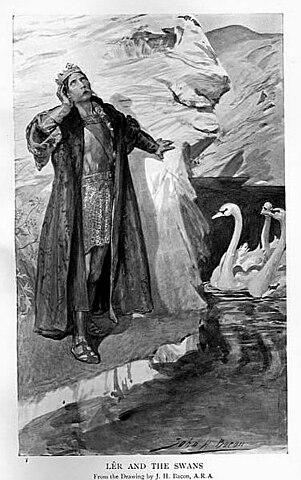
One of the most haunting tales in Irish mythology, The Children of Lir tells of four siblings transformed into swans by their jealous stepmother, Aoife. Condemned to spend 900 years on Ireland’s lakes and seas, their story reflects themes of love, loss, and endurance. When Christianity finally reached Ireland, the children were freed — a symbol of transformation and spiritual rebirth.
The Salmon of Knowledge
In this timeless legend, the young Fionn mac Cumhaill accidentally gains all the world’s wisdom after tasting the mystical Salmon of Knowledge. His enlightenment shapes him into the wise leader of the Fianna. The story highlights the Irish reverence for wisdom and the idea that destiny often arrives in unexpected ways.
Tír na nÓg – The Land of Eternal Youth
Tír na nÓg (pronounced Teer na Nogue) is one of the most beautiful myths in Irish mythology. It tells of Oisín, son of Fionn, who falls in love with Niamh of the Golden Hair and travels with her to the Otherworld. There, he experiences eternal youth and joy — until he returns to Ireland to find that centuries have passed. The story captures Ireland’s longing for beauty, love, and the eternal.
The Cattle Raid of Cooley (Táin Bó Cúailnge)
Perhaps the greatest epic of Irish mythology, this story recounts Queen Medb’s war against Ulster to seize the prized Brown Bull of Cooley. Only Cú Chulainn, the teenage warrior, stands in her way. Filled with drama, battle, and tragedy, the Táin is often compared to the Iliad of Irish legend.
These tales are more than myths — they are echoes of Ireland’s ancient imagination. They link the spiritual and the earthly, the heroic and the divine, offering lessons that still resonate today.
The Otherworld and the Fair Folk
In Irish mythology, the boundary between the human world and the supernatural was thin — sometimes as delicate as a mist drifting across the hills. Beyond that veil lay the Otherworld, a realm of eternal beauty, youth, and magic. Known by many names — Tír na nÓg (Land of Youth), Mag Mell (Plain of Delight), and Emain Ablach (Island of Apples) — it was a paradise untouched by time or death.
The Otherworld
The Otherworld was not a distant heaven but a realm that existed alongside our own. It could be reached through sacred wells, caves, ancient mounds (sídhe, pronounced shee), or across the western sea. There, the Tuatha Dé Danann lived after retreating from the mortal world, ruling from their hidden palaces beneath the hills.
To the ancient Irish, this world was both wondrous and dangerous. Those who entered might gain wisdom and treasure — or be lost forever to its timeless enchantment.
The Fair Folk – The Aos Sí
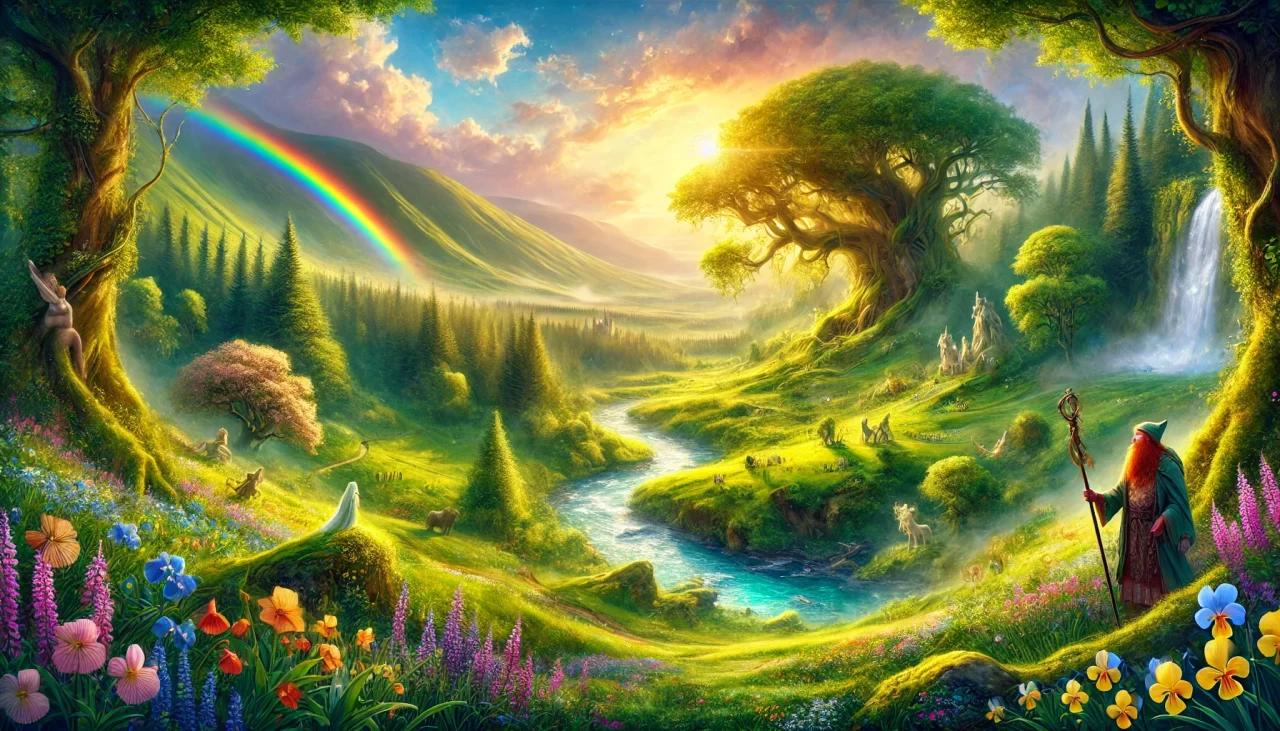
Over time, belief in the Tuatha Dé Danann evolved into the folklore of the Aos Sí, or the Fair Folk. These beings were thought to inhabit fairy mounds and ancient ringforts scattered across Ireland’s countryside. Though beautiful and powerful, they were also unpredictable — capable of blessing or cursing those who crossed their paths.
Many Irish traditions grew from respect for these hidden people: leaving milk or bread by the hearth, avoiding cutting fairy trees (hawthorns), and never disturbing their paths through the fields.
The Connection Between Worlds
The relationship between humans and the Fair Folk reflects one of the central themes of Irish mythology — balance. The world of mortals and the world of spirits were intertwined, and harmony between them brought prosperity. Disrespect, however, could invite misfortune.
Even today, many in Ireland treat fairy places with quiet reverence, a living reminder that the old beliefs have never entirely vanished.
The stories of the Otherworld and the Fair Folk remind us that Irish mythology was never just about gods or warriors — it was about the spirit of the land itself. Every hill, lake, and ancient tree holds the whisper of something beyond, keeping Ireland’s mystical heart alive.
The Influence of Irish Mythology Today
Though thousands of years old, Irish mythology continues to inspire art, literature, film, and music worldwide. Its stories have never truly faded — they have evolved, adapting to each new age while preserving the spirit of ancient Ireland. The gods, heroes, and legends of the Tuatha Dé Danann live on not only in manuscripts and folklore but in the creative imagination of modern culture.
In Literature and Art
Irish mythology has inspired countless writers and poets, from W. B. Yeats, who wove the Fair Folk and mystical Ireland into his poetry, to Lady Gregory, who retold the old stories for a new generation. Modern authors such as Marian Zimmer Bradley, Morgan Llywelyn, and Juliet Marillier have reimagined Ireland’s gods and heroes in their novels, introducing these myths to audiences worldwide.
In art, the imagery of the Morrígan, Lugh, and Brigid continues to appear in paintings, sculpture, and even tattoos, representing strength, wisdom, and transformation.
In Film and Popular Culture
Films such as The Secret of Kells (2009) and Song of the Sea (2014) bring Irish mythology to life through stunning animation, drawing inspiration from the stories of the Tuatha Dé Danann and the Fair Folk. Even Hollywood productions like Hellboy II: The Golden Army and shows like American Gods have drawn from Irish mythological themes — showing how enduring and adaptable these tales remain.
In Irish Identity and Heritage
For many people in Ireland and across the Irish diaspora, mythology serves as a link to heritage and identity. It connects the modern nation to its ancient past — to a time when every river, mountain, and stone had a spirit or a story.
Festivals such as Lughnasadh and Samhain still echo the rhythms of the old Celtic year, blending ancient customs with modern celebration. Through storytelling, music, and folklore, Irish mythology continues to live and breathe in the hearts of its people.
A Global Legacy
Today, Irish mythology inspires creators, scholars, and spiritual seekers worldwide. Its universal themes — love, fate, transformation, and the power of nature — transcend culture and time. Whether encountered in a poem, a film, or a whispered legend, these ancient stories remind us that Ireland’s myths are not relics of the past, but living echoes of something eternal.
Why These Myths Still Matter
In a world driven by technology and change, Irish mythology continues to hold a timeless wisdom. These ancient stories remind us of who we are, where we came from, and the values that shaped the Irish spirit — courage, honour, and respect for nature and the unseen world.
Lessons from the Old Gods and Heroes
The gods and heroes of Irish mythology were never perfect beings — they were complex, emotional, and deeply human. Through their triumphs and flaws, they reflect our own struggles with destiny, love, loss, and purpose.
The Dagda teaches us generosity and strength; Brigid reminds us to nurture creativity and compassion; Cú Chulainn shows the cost of pride and heroism; and Oisín warns us of the passage of time and the price of longing for what cannot last.
A Connection to the Land and Spirit
At its heart, Irish mythology is not only about gods and warriors — it is about Ireland itself. The myths root us in the land, where every river, mountain, and sacred mound tells a story. They invite us to see the world as alive and interconnected, where the natural and supernatural coexist.
This worldview — so different from modern separation between nature and humanity — offers a powerful reminder of balance, reverence, and belonging.
Keeping the Stories Alive
To remember and retell these stories is to keep Ireland’s heritage alive. Each time we share the tale of Lugh’s victory, the sorrow of Lir’s children, or the mystery of the Sidhe, we honour those who told them first — the filí and seanchaí who kept the flame of Irish culture burning through the ages.
By keeping these myths alive today, we carry forward the same tradition: storytelling as memory, identity, and magic.
The myths of Ireland endure because they are more than stories — they are reflections of the human spirit, timeless as the land that gave them birth.
Perfect — here’s the final section of your blog post, crafted to wrap up the journey beautifully, reinforce the keyword “Irish mythology,” and leave readers inspired to explore more.
Conclusion: Keeping Irish Mythology Alive
The world of Irish mythology is vast, mysterious, and deeply rooted in Ireland’s identity. It bridges the sacred and the everyday — where gods walk beside mortals, the land itself is alive with spirit, and every story holds a spark of truth about who we are.
These ancient tales remind us that Ireland’s heritage isn’t locked away in dusty manuscripts or ruins — it lives in the songs we sing, the festivals we celebrate, and the stories we continue to share. The Tuatha Dé Danann still whisper through the hills, the Fair Folk still dance in the twilight, and the heroes of old still echo in the heart of every storyteller.
By reading, retelling, and celebrating these myths, we ensure that the voices of Ireland’s past continue to be heard. In doing so, we keep alive a priceless legacy — one that connects us not only to Ireland’s ancestors but to the timeless human desire to seek meaning, wonder, and belonging.
So, whether you’re discovering these legends for the first time or returning to them with new eyes, remember this: Irish mythology isn’t just Ireland’s history — it’s Ireland’s soul.
